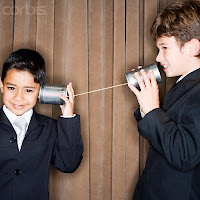Two Sides to Every Story!

In chapter 7, Negus focuses on the “politics” of music. Now one would naturally assume that he is going to cover the ins and outs of the music business, such as how an artist gets signed, how their money is distributed, how much royalty they receive and other aspects of this topic. Well he doesn’t. Negus focuses on the dynamics of power and influence.
He begins the chapter with a focus on the “message” of music. When we listen to songs, why do we listen? What makes a particular song on an album more attracting than the track before or after it? Why does a couple pick a song to dance to as their first dance during their wedding? Or why do some parents, teachers and other authority figures disapprove of our youth listening to certain songs? It is because of the message! When we hear something that relates to us personally or our current circumstances, we naturally gravitate to it. This applies to music as well.
So what is it about music and the messages they bring, what is the big deal? First off Negus goes to explain to us how music has become versatile. When a writer writes a song, that musician may be writing about something they see happening in the world around them but the beauty of music is because everyone experiences things different when we hear a song, it may have a totally different meaning to you than the original intended meaning of the author. Say for example you hear a song about poverty. The artist may be writing about a poverty stricken area in near their home. When you hear it they meaning may be relevant to a poor person begging for change on the freeway exit. While someone over seas may be listening to that song and looking right in their home. The author may have intended for us to begin to recognize and admit that poverty exist while you may begin to think about how to help and that person overseas may be crying for help. Negus gives us an example of this with the song “Imagine” by the late Beatle John Lennon. The song “imagine” is asking the listener (you!) to imagine a world without things that cause conflict and division. Things such as: hunger, countries, religion and even possessions. Lennon is merely asking for us to think as the world as being “One.” Negus points out the versatility of the meaning of the song by informing us of where it has been heard. In 1987 the song was sang by a group at a conservative party conference in Britain as a greeting to Margaret Thatcher at the same time it has been sang by those who were protesting the wars and violence taking place during that time frame. On one hand the message of the song was to ask the listeners to imagine unity and on the other hand some took it as a form of protest. To the point where it had to carefully be considered before it was allowed to be played on the British BBC radio waves. This brings us to our next point, music and their messages as influence.
Just as different songs have their messages, sometimes those messages can be viewed as a threat. The song “Imagine” by John Lennon was intended to bring unity to people but some saw it as a way to get people rallied up about circumstances. Because of the misreading of the message behind a song, some governments interfere with the distribution of music to “protect” their domains. An early example of this was in Nazi Germany. For fear that their cultural values would be corrupted by foreign influences, Hitler imposed a music policy in Nazi Germany. Hitler placed policies prohibiting jazz music or any other music written, performed or developed by blacks and Jews from being heard. Anyone caught would suffer time in jail or be placed in concentration camps. The justification behind this was “to purify a population.” Hitler felt that the American music had an influence on the people. He wanted to prevent “Americanization” through music and the washing away of traditional culture. This was the beginning and early stages of censorship. I will not go into this topic because it is one to go into much depth but if you want to know more about it click here. Recent example of fear put onto government through the influence of music is 90’s gangster rap group NWA. With their controversial lyrics about violence and feelings toward the police, there were numerous attempts to censor this group for fear of listeners adopting these point of views and acting on them.
Negus goes on to conclude that the purpose of this chapter was to illustrate how popular songs don’t have just one meaning politically but rather how the create and connect different political agendas. The messages in songs can either serve its intend purpose or be viewed as something else and create an opportunity for politicians to get there agendas put on the table and further control the people. I don’t want to scare away your creative expression, I just want you to realize that there are always two sides to a story!



